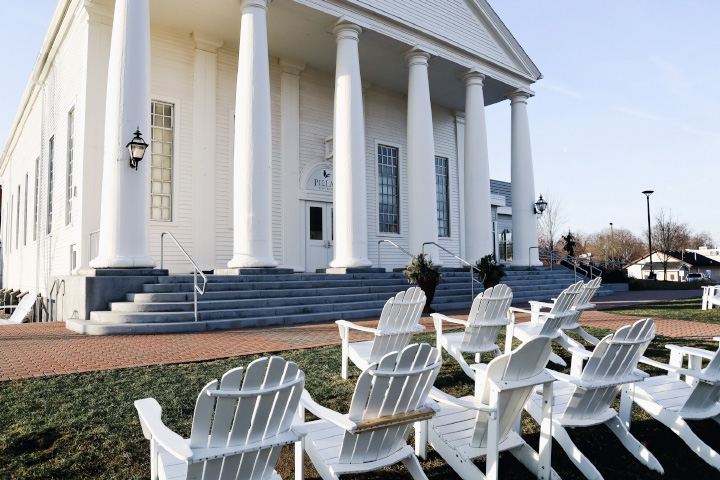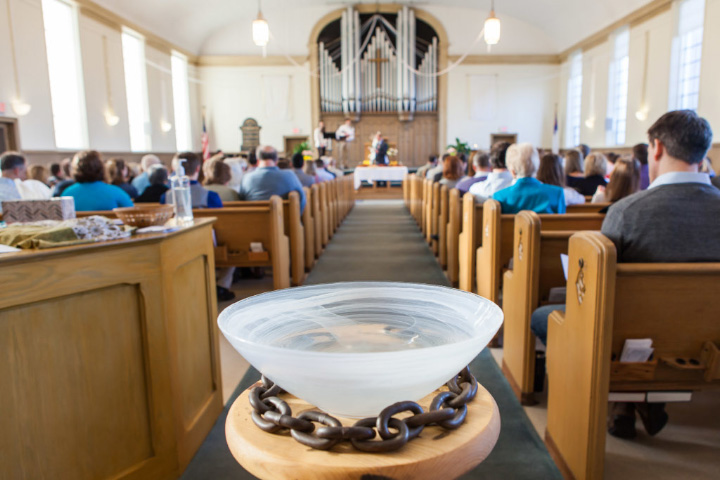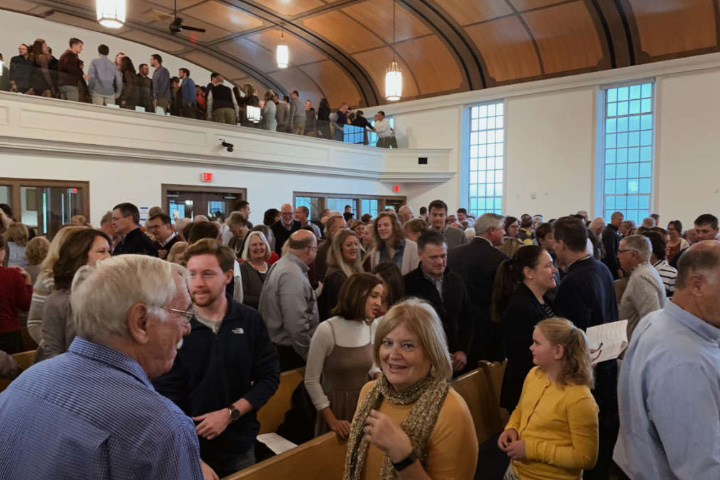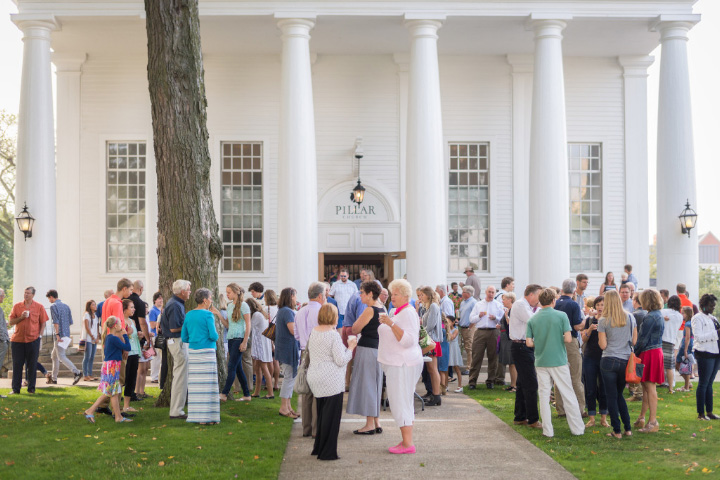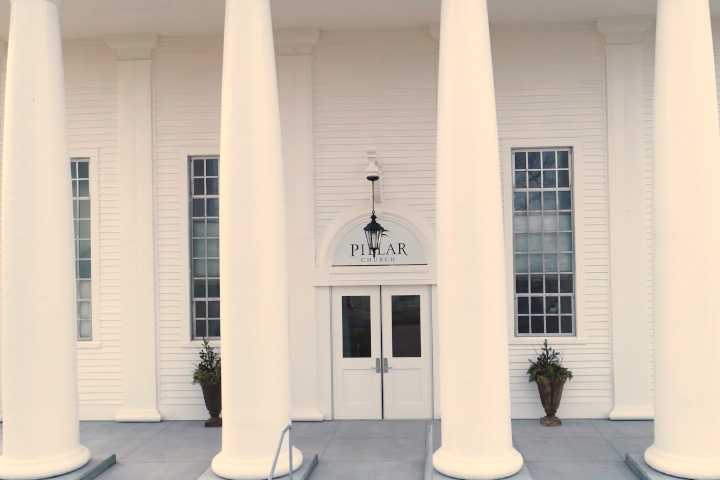About Us
Along with most Christian churches, Pillar affirms three creeds that were written in the first few centuries after Jesus’s death: the Apostles’ Creed, the Nicene Creed, and the Athanasian Creed.
Four statements of belief, known as Standards of Unity, express what Pillar believes: The Heidelberg Catechism, The Belgic Confession, The Canons of Dort, and The Confession of Belhar.
Pillar is a dual-affiliated church of the Reformed Church in America and the Christian Reformed Church in North America. Our leadership structure arises out of the Reformed model of a church council (or consistory) which is made up of elders, deacons, and the pastors of the church.
As Pillar has grown, the leadership structure has been refined and now characterized as "vision driven, staff led, council (consistory) supported, and congregation empowered."
Today, rather than spending its energy and time on the day-to-day functioning of the church, our council works in an advisory and supportive role for the pastors and staff, focusing on mission and vision.
The council also approves any major decisions, i.e., purchase or sale of property, approval of budgets, issuing of a call to a pastor, significant decisions for the common life of church. Our council, made up of 5 elders, 5 deacons and the pastors of the church, meets bi-monthly for a 2-3 hour meeting.
The lead pastor is the president of the council and guides the meetings. The meetings are worshipful gatherings at which the conversations are at a higher level around the vision and mission of the church.
Our current council includes:
- President: Pastor Jon Brown
- Vice-President: Bob Bieri
- Elders: Jan DeBoer, Matt Hilton, Angela Wagenveld, Ken Beukelman, Bob Bieri
- Deacons: Stephanie Byma, Ann Schenkel, Scott DeMaagd, Alpha Mansaray, Stephanie DeLeeuw
- Pastors: Anna Erickson, Joel Boersma, Jenna Barber, Jonathon Gabhart, Chris DeVos
- Clerk: Amy Berarducci
In 1847 a band of immigrants led by Albertus Van Raalte was invited by the state of Michigan to establish a community on the west side of the state. Upon landing, they planted a church for the community. After enduring a harsh first winter, the community and the church in Holland flourished. In 1856, the building that we still worship in was built. Those in the Pillar community assisted in the establishment of Holland Charter Academy, which would become Hope College. Pillar members also played a crucial role in the establishment of Western Theological Seminary.
After the division that occurred in the church in 1882 between the CRC and the RCA, the denominations spiraled in opposite directions. But after 130 years of division, Pillar re-established itself in 2012 to renew its first commitment to be a church for the city: reconciling divisions, raising up leaders, redeeming the city, renewing the church.
In 1856 the founders of Pillar Church hoisted a tin rooster atop the building as a weather vane. Throughout church history, particularly in churches of the Reformed tradition, the rooster has chiefly symbolized two ideas.
First, the rooster calls to mind Peter’s denial of Christ and then Christ’s reinstatement of Peter. The church is reminded that it is made up of the broken and the blessed.
Secondly, in the same way, that the rooster rises before the sun and declares the coming light, the church is to be the herald to the world and to proclaim that the light is coming.
Among the values we hold as a community is to be a place where your name is known, your story is heard, and your questions are honored. A way to live that out as we continue to grow in numbers is to establish new worshipping communities in various locations, think : “one church, multiple locations, same mission.”
We call it Growing Small.
Our Vision
Pillar Church is a dual-affiliation congregation of the Reformed Church in America (RCA) and the Christian Reformed Church in North America (CRC). Pillar Church was the first church established by those who settled the city of Holland in 1847. It was originally established as an RCA congregation by Reverend Albertus Van Raalte, but in 1884, after significant tension and a painful split, became a CRC church.
After 130 years of division, in the Fall of 2012 Pillar Church re-established itself around a vision of reconciliation. The church where two denominations once divided is now a symbol of unity.
Our Vision
Pillar Church is a dual-affiliation congregation of the Reformed Church in America (RCA) and the Christian Reformed Church in North America (CRC). Pillar Church was the first church established by those who settled the city of Holland in 1847. It was originally established as an RCA congregation by Reverend Albertus Van Raalte, but in 1884, after significant tension and a painful split, became a CRC church.
After 130 years of division, in the Fall of 2012 Pillar Church re-established itself around a vision of reconciliation. The church where two denominations once divided is now a symbol of unity.
FAQs
Along with most Christian churches, Pillar affirms three creeds that were written in the first few centuries after Jesus’s death: the Apostles’ Creed, the Nicene Creed, and the Athanasian Creed.
Four statements of belief, known as Standards of Unity, express what Pillar believes: The Heidelberg Catechism, The Belgic Confession, The Canons of Dort, and The Confession of Belhar.
As Pillar has grown, the leadership structure has been refined and now characterized as "vision driven, staff led, council (consistory) supported, and congregation empowered."
The lead pastor is the president of the council and guides the meetings. The meetings are worshipful gatherings at which the conversations are at a higher level around the vision and mission of the church.
Our current council includes:
- President: Pastor Jon Brown
- Vice-President: Bob Bieri
- Elders: Ryan Tanis, Jan Spoelhof, Dean Marsman, Paul Brinks, and Lisa Lundy
- Deacons: Morgan Seiler, Beth Lampen, Chip Seabolt, Sue Vos, Jonathon Lindman
- Pastors: Anna Erickson, Joel Boersma, Jenna Barber, Jonathon Gabhart, Chris DeVos
- Clerk: Amy Berarducci
In 1847 a band of immigrants led by Albertus Van Raalte was invited by the state of Michigan to establish a community on the west side of the state. Upon landing, they planted a church for the community. After enduring a harsh first winter, the community and the church in Holland flourished. In 1856, the building that we still worship in was built. Those in the Pillar community assisted in the establishment of Holland Charter Academy, which would become Hope College. Pillar members also played a crucial role in the establishment of Western Theological Seminary.
After the division that occurred in the church in 1882 between the CRC and the RCA, the denominations spiraled in opposite directions. But after 130 years of division, Pillar re-established itself in 2012 to renew its first commitment to be a church for the city: reconciling divisions, raising up leaders, redeeming the city, renewing the church.
In 1856 the founders of Pillar Church hoisted a tin rooster atop the building as a weather vane. Throughout church history, particularly in churches of the Reformed tradition, the rooster has chiefly symbolized two ideas.
First, the rooster calls to mind Peter’s denial of Christ and then Christ’s reinstatement of Peter. The church is reminded that it is made up of the broken and the blessed.
Secondly, in the same way, that the rooster rises before the sun and declares the coming light, the church is to be the herald to the world and to proclaim that the light is coming.
Among the values we hold as a community is to be a place where your name is known, your story is heard, and your questions are honored. A way to live that out as we continue to grow in numbers is to establish new worshipping communities in various locations, think : “one church, multiple locations, same mission.”
We call it Growing Small.
You can learn more by watching the video posted below.
Growing small
Among the values we hold as a community is to be a place where your name is known, your story is heard, and your questions are honored. A way to live that out as we continue to grow in numbers is to establish new worshipping communities in various locations, think : “one church, multiple locations, same mission.”
We call it Growing Small.
We invite you to stay tuned-in to our communications about this topic through subscribing to our weekly newsletter by clicking HERE.
